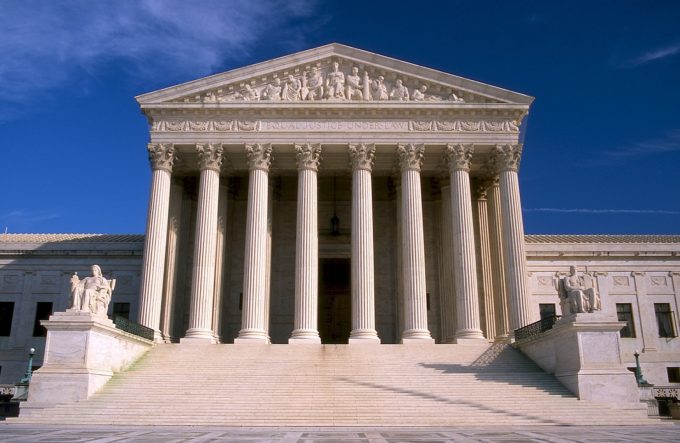In a unanimous decision, the United States Supreme Court upheld the Federal Circuit’s interpretation of the Leahy-Smith America Invents Act’s (“AIA”) “on-sale” provision, 35 U.S.C. § 102(a)(1) (2018), in response to Helsinn Healthcare S. A.’s patent infringement claim against Teva Pharmaceuticals USA, Inc. The Federal Circuit’s decision reversed the District Court’s previous ruling that an invention is “on-sale” only if the sale, or offer of the invention, made the invention available to the public. Under the AIA, inventions that are “on-sale” are barred from patent eligibility.
In 2001, Helsinn Healthcare S.A. (Helsinn), entered into license, sales, and purchase agreements with MGI Pharma Inc. (MGI). The agreements granted MGI the right to distribute, market, and sell 0.25 milligram and 0.75 milligram doses of palonosetron, the active ingredient in Helsinn’s Aloxi, a drug used to treat nausea in chemotherapy patients. Helsinn required that MGI keep any proprietary information received under their agreements confidential. Almost two years later, Helsinn filed the first of four patent applications for the palonosetron solutions. The last patent application resulted in U.S. Patent No. 8,598,219 (filed May 23, 2013) (’219 patent), covering a fixed dose of 0.25 milligram of palonosetron in a 5 milliliter solution.
Teva Pharmaceutical Industries, Ltd. (Teva), an Israeli pharmaceutical company, and its American affiliate, sought approval from the FDA in 2011 to market a generic 0.25 milligram palonosetron product. Helsinn subsequently sued Teva for infringing on the ‘219 patent. Teva countered that the ‘219 patent violated the AIA, which bars a person from patenting an invention “in public use, on sale, or otherwise available to the public before the effective filing date of the claimed invention.” 35 U.S.C. § 102(a)(1) (2018).
The District Court ruled in favor of Helsinn, asserting that, under the AIA, the patented dosage was not on sale before the initial patent application was submitted, because it was not disclosed in the public agreements between MGI and Helsinn. The Federal Circuit reversed, and the Supreme Court affirmed the reversal. The Supreme Court held that the judicially constructed meaning of “on-sale” was carried over into the AIA when Congress passed it in 2011 and adopted the exact language from the preceding statutes. The Supreme Court has previously interpreted the on-sale bar to impose two conditions on patentability. A patent cannot be issued if more than a year prior to the filing of an application (1) the invention is the subject of a commercial offer for sale and (2) it is ready for patenting. Pfaff v. Wells Electronics, Inc., 525 U.S. 55, 67–68 (1998). Importantly, the on-sale bar may apply even if the sales agreements between the inventor and a third party require the invention remain confidential, sometimes referred to as a “secret sale.” The Supreme Court explicitly rejected Helsinn’s contention that the addition of the catchall phrase “or otherwise made public” in the AIA suggests that Congress intended to alter the meaning of the reenacted term “on sale.”
As the International Association of Intellectual Property Attorneys points out, the Supreme Court’s decision specifically focuses on the the AIA’s effect on the scope of the “on-sale” bar, and does not assess the facts surrounding the transaction, including the distribution agreements themselves. Ipwatchdog also provides an additional industry reaction to the Supreme Court’s ruling on the AIA’s “on-sale” bar.
